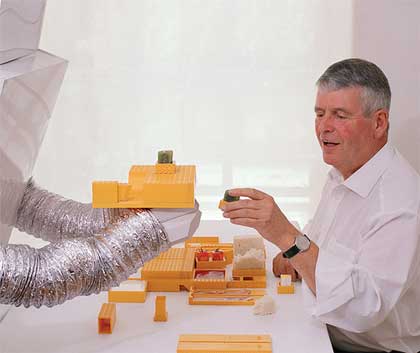 Many industrialized countries are about to suffer of the consequences of an ageing society. The rising costs of social benefits and a decrease in healthcare workers has resulted in the elderly and handicapped community growing lonely and falling into despair. Japan is looking at technology, in particular robotics and cybernetics, to solve some of its social problems.
Many industrialized countries are about to suffer of the consequences of an ageing society. The rising costs of social benefits and a decrease in healthcare workers has resulted in the elderly and handicapped community growing lonely and falling into despair. Japan is looking at technology, in particular robotics and cybernetics, to solve some of its social problems.
Martin Postler developed the “Life/Machine – Scenes from a roboted Life� project to investigate the possibility of creating an alternative society in which humans and their alter egos, the robots, can live together in the domestic space. The project started in September 2006 in Japan, where he had undertaken a research residency at the Kyoto University of Arts. He then pursued the project at the Design Products department of the Royal College of Art in London.
The project explores questions such as: Can humanity and technology work together in a factory-like symbiosis, where help and assistance result in a machined life? How much freedom would we have to give up to accommodate the robots needs? How much would we have to bend, how much would we have to adjust to live in such an intimate relationship?
In Martin’s near future world the robot has similar physical proportions as the human, but works on common binary computational logics. His intelligence and skills are very limited but that doesn’t prevent it from being involved in several every day life procedures to assist and serve the human being in a defined household surrounding.
The project is divided into 3 different areas, representing 3 different everyday routines.
Part 1 – Nutrition
The emphasis lies on the pure physical and interactive need of the human to prepare, store and process food and on the other side on basic robot intelligence attributes like order, color recognition, formal and geometric repetition and reduced functional complexity.
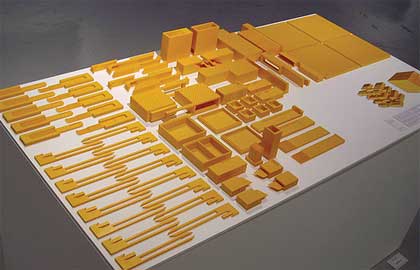 Robot kitchen tools Kyoto 2006
Robot kitchen tools Kyoto 2006
Even a very clean kitchen would be way too complicated for robots as they exist right now. Colors, shapes, functions, order and even the whole concept of a kitchen would have to change. The designer therefore imagined a product system which consists of 74 single elements. All elements can be build up to product structures or “functional landscapes� accommodating the intellectual and functional necessities of both man and robot.
Part 2 – Hygiene
Intimate moments in the robotic household: the robot is brushing the humans teeth, waxing his ears and give him a shaving of his choice.
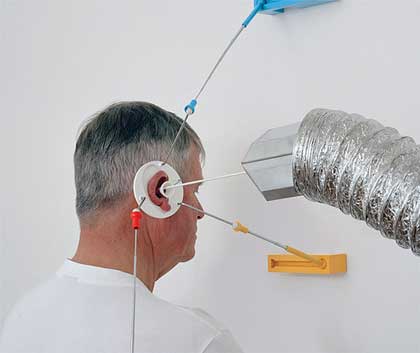 Robotic ear wax
Robotic ear wax
Martin designed the tools which would make these interactions possible. The main focus lies on the physical exposure and almost humiliating adjustment of the human protagonist to his robotic twin, resulting in an automated morning routine.
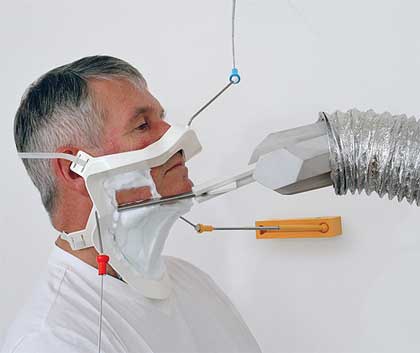 Robotic shaving
Robotic shaving
Part 3 – Leisure
This chapter presents an even more satirical aspect of this relationship by developing a range of “schoolyard games� which are
modified to accommodate both robots and humans needs. The designer attempted to narrow down the human – machine conflict to more bizarre and almost tragicomic scenery referring to more philosophical aspects of the theme.
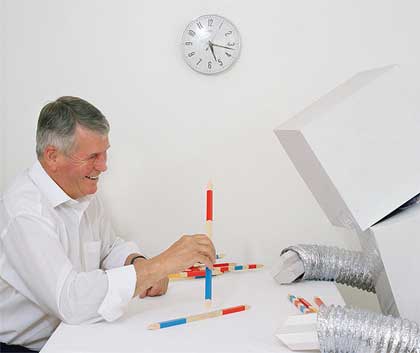 The project points on the myths of technological development in a rather satiric and ironic way, explains Martin Postler. By choosing a “what if� situation, a parallel world, a realistic scenario I intend to confront the protagonist with his own creation, his technological mirror. On the other side the project celebrates the human condition and the fascination and commitment towards technological progress, the ongoing drive to recreate ourselves.
The project points on the myths of technological development in a rather satiric and ironic way, explains Martin Postler. By choosing a “what if� situation, a parallel world, a realistic scenario I intend to confront the protagonist with his own creation, his technological mirror. On the other side the project celebrates the human condition and the fascination and commitment towards technological progress, the ongoing drive to recreate ourselves.
All images courtesy of Martin Postler.
